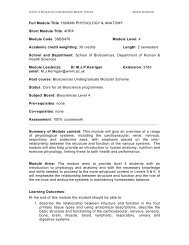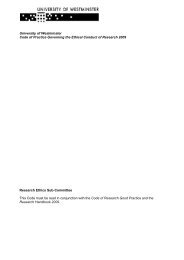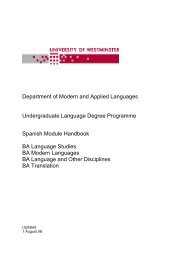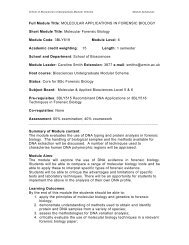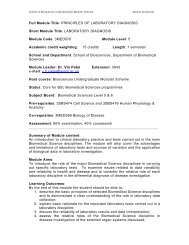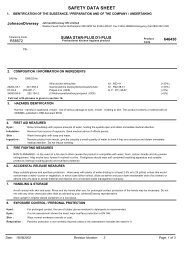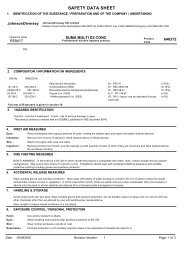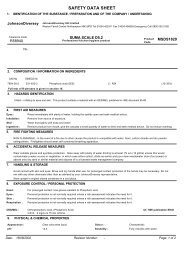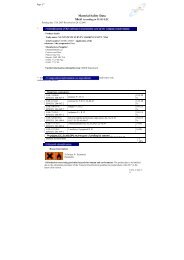CONTENTS 1. Introduction 1.1 Course Outline 1 1.2 Introduction ...
CONTENTS 1. Introduction 1.1 Course Outline 1 1.2 Introduction ...
CONTENTS 1. Introduction 1.1 Course Outline 1 1.2 Introduction ...
Create successful ePaper yourself
Turn your PDF publications into a flip-book with our unique Google optimized e-Paper software.
9. Teaching and Learning Strategies<br />
9.1 Teaching and Learning Policy<br />
The School has a detailed Teaching, Learning and Assessment Policy, with which all teaching staff<br />
must comply. Over the duration of the degree, you will be exposed to a wide range of teaching<br />
and learning methods appropriate to helping you meet module learning outcomes. The highly<br />
structured teaching timetable is necessary to deliver the more traditional elements that ensure<br />
intellectual rigour. However, our students are still offered a great level of autonomy in their<br />
learning. Group work, project planning, problem solving and open ended experiments are just<br />
some of the ways we encourage an ‘investigative’ attitude in the learning process.<br />
9.2 Teaching Methods<br />
The course employs a range of teaching and learning strategies, modes of delivery and<br />
assessment methods appropriate to the aims and intended outcomes of each module and the<br />
course as a whole. The majority of the modules are delivered in the classroom/laboratory or<br />
classroom/computer-room sessions which are effectively used throughout scientific/applied<br />
education.<br />
Photographic practice modules will involve a large amount of self-directed study and are delivered<br />
through a range of different modes. They involve seminars and workshops based in the studios or<br />
darkrooms, together with one-to-one or group tutorials.<br />
The Career Management Skills module will be based upon tutorials and self-directed study using<br />
Blackboard, an online learning resource.<br />
Assessment methods of individual modules are based on:<br />
• laboratory work and scientific reports<br />
• written courseworks and numerical problems<br />
• dissertations and personal presentations<br />
• written examinations (for some modules only)<br />
Assessment of the major project is based on:<br />
• Preliminary project plan<br />
• Final project report, workbook and practical work.<br />
The major project can be in any area related to imaging systems and image production, however<br />
it is expected that there will be a high technical content to the work. Projects based on a portfolio<br />
of visual material will require both visual and technical excellence. Each student is assigned a<br />
personal project supervisor who is available for consultation on a regular basis and will agree the<br />
project topic with the student and monitor his/her progress. In the initial phase, students are<br />
introduced by lectures and exercise the disciplines of Project Planning and methods of time and<br />
budget estimation and management (during the Project Planning phase). A formal plan is<br />
produced and the project is then conducted.<br />
Individual and group tutorials enable a more focused teaching/learning experience. The<br />
involvement of the peer group is valued as a dynamic contribution to the learning experience and<br />
use of the wide range of resources each student brings to the course. In individual tutorials the<br />
focus is on the student’s experience of the course.<br />
9.3 Teaching Facilities<br />
A focus of the teaching/learning activities of the course is laboratory and computer sessions,<br />
based in dedicated rooms J<strong>1.</strong>1, J<strong>1.</strong>2, J<strong>1.</strong>03, J <strong>1.</strong>23 (imaging science laboratories) and J.<strong>1.</strong>22<br />
(computer facilities). The course also makes full use of the Photographic facilities in the Margaret<br />
Harker building for practical work, including workshops and technical facilities for photographic<br />
capture (studios and equipment), darkrooms, a digital lab and a digital printing facility.<br />
DPI_Hbook 25 ©University of Westminster





